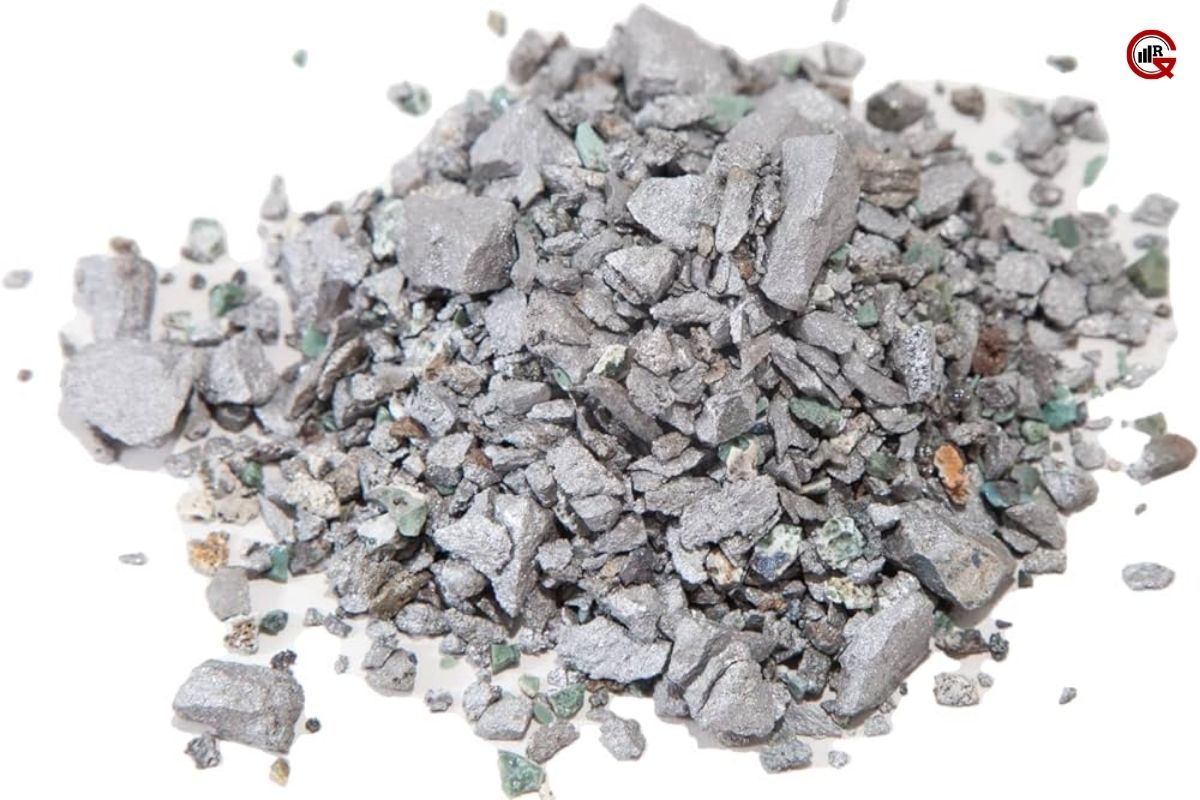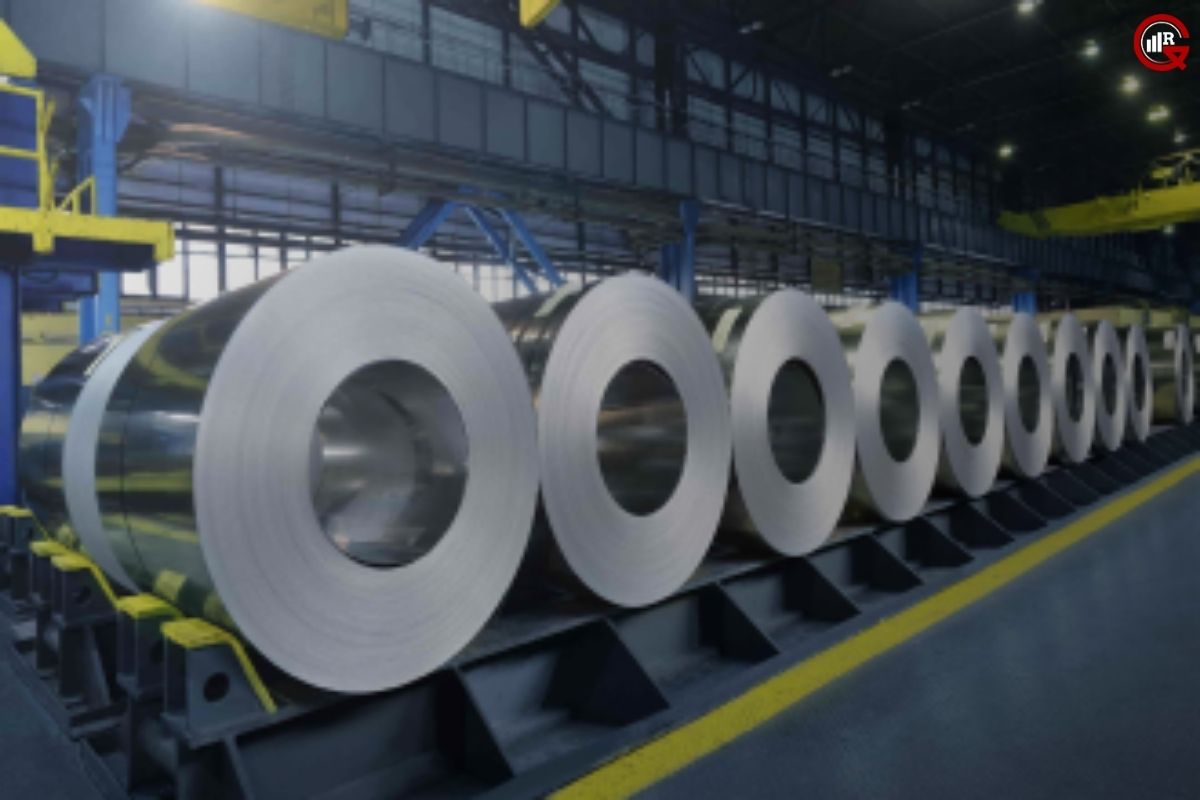(Source – Wikipedia).
Ferro molybdenum, an essential alloy in modern metallurgy, combines iron and molybdenum, providing exceptional strength, hardness, and resistance to corrosion. This alloy plays a vital role in the production of high-performance steels and superalloys, making it indispensable in various industrial applications, including construction, automotive, and aerospace. This article explores the production, properties, applications, and significance of ferro molybdenum in contemporary engineering and manufacturing.
Production of Ferro Molybdenum
The production involves several stages, starting from the extraction of molybdenum ore to the final alloying process.
1. Extraction of Molybdenum:
Molybdenum is primarily obtained from molybdenite (MoS₂) ore. The ore is mined through open-pit or underground methods and then processed to extract molybdenum concentrate. The concentrate typically contains around 85-90% molybdenum disulfide.
2. Roasting:
The molybdenum concentrate is roasted in the presence of oxygen to convert molybdenum disulfide into molybdenum trioxide (MoO₃). The chemical reaction is as follows:
This step is crucial as it removes sulfur and produces a more refined molybdenum product.
3. Reduction:
The molybdenum trioxide is then reduced using hydrogen or carbon to produce molybdenum metal powder. The reduction process using hydrogen can be represented by:
4. Alloying:
Finally, the molybdenum metal powder is mixed with iron and subjected to a high-temperature furnace to produce ferro molybdenum. This process involves melting the metals together to form a homogeneous alloy, typically containing 60-75% molybdenum by weight.
Properties of Ferro Molybdenum

It possesses a range of properties that make it highly valuable in metallurgical applications:
1. High Strength and Hardness:
Molybdenum enhances the strength and hardness of steel, making ferromolybdenum an ideal additive for high-strength alloys.
2. Corrosion Resistance:
Molybdenum improves the corrosion resistance of steel, particularly in acidic and chloride-containing environments. This property is critical for applications in chemical processing and marine industries.
3. High Melting Point:
Molybdenum has a high melting point (2,623°C), which contributes to the heat resistance of ferro molybdenum alloys. This makes them suitable for high-temperature applications.
4. Good Weldability:
Ferro molybdenum alloys exhibit excellent weldability, allowing for the production of robust welded joints in construction and manufacturing.
5. Thermal Expansion:
Molybdenum reduces the thermal expansion of steel, enhancing the dimensional stability of components exposed to temperature variations.
Applications of Ferro Molybdenum

The unique properties of ferromolybdenum make it indispensable in various industrial sectors:
1. Steel Production: The primary use of ferromolybdenum is in the production of high-strength and stainless steel. It is added to steel to improve hardenability, strength, toughness, and resistance to wear and corrosion. Common applications include:
Construction: Structural steels used in buildings, bridges, and infrastructure.
Automotive: High-strength steel for car bodies, engine components, and transmission systems.
Oil and Gas: Steels are used in pipelines, drilling equipment, and offshore platforms, where corrosion resistance is crucial.
2. Superalloys: Ferromolybdenum is a key ingredient in the manufacture of superalloys, which are used in demanding environments requiring exceptional mechanical properties and resistance to heat and corrosion. Applications include:
Aerospace: Turbine blades, engine parts, and exhaust systems in aircraft and spacecraft.
Power Generation: Components in gas turbines and power plants.
3. Chemical Processing: In the chemical industry, ferromolybdenum is used to produce corrosion-resistant equipment, such as reactors, heat exchangers, and piping systems, which are exposed to harsh chemicals and high temperatures.
4. Electronics: Molybdenum’s high conductivity and thermal stability make ferromolybdenum alloys suitable for electronic and electrical applications, including semiconductor devices, cathodes, and electrical contacts.
5. Medical Devices: The biocompatibility and corrosion resistance of molybdenum-containing alloys makes them ideal for medical implants and surgical instruments.
Significance in Modern Engineering

Ferromolybdenum’s impact on modern engineering is profound, contributing to advancements in material science and industrial technology. Its ability to enhance the mechanical properties of steel and other alloys has led to the development of stronger, more durable, and more reliable materials. This, in turn, has enabled the creation of innovative structures, vehicles, machinery, and devices that withstand extreme conditions and meet stringent safety standards.
Environmental Impact: While the production of ferromolybdenum involves significant energy consumption and potential environmental concerns, ongoing research and development efforts aim to minimize the ecological footprint. Sustainable practices in mining, refining, and alloy production, along with recycling initiatives, are crucial in mitigating the environmental impact.
Economic Importance: The demand for ferromolybdenum is closely tied to the global steel industry, making it a valuable commodity in international markets. Its importance in critical industries such as construction, automotive, and aerospace underscores its economic significance.
Future Trends: The future of ferromolybdenum looks promising, with advancements in material science and metallurgy driving innovation. Emerging technologies, such as additive manufacturing (3D printing) and the development of new alloys with enhanced properties, will likely expand the applications and demand for ferromolybdenum.
Conclusion
Ferromolybdenum is a cornerstone of modern metallurgy, providing essential properties that enhance the performance and durability of steels and superalloys. Its wide range of applications, from construction and automotive to aerospace and chemical processing, highlights its versatility and importance. As technology advances and new challenges arise, ferro molybdenum will continue to play a critical role in developing high-performance materials that meet the demands of contemporary engineering and manufacturing. Understanding the production processes, properties, and applications of ferro molybdenum is essential for industries aiming to leverage its benefits and drive innovation in material science.






